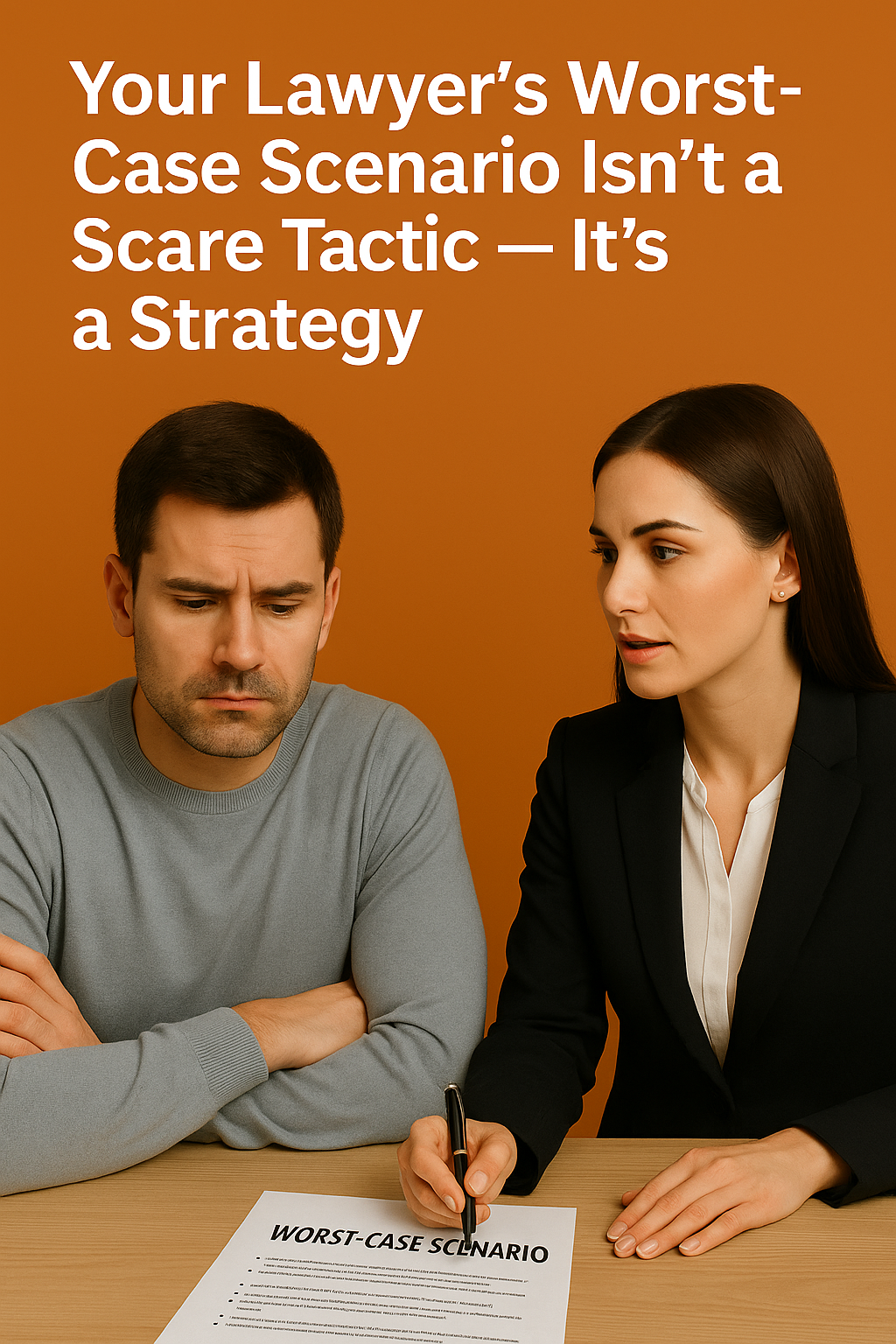You finally pick up the phone and call your lawyer. You explain the situation, maybe even mention a few things you’ve read online. And before you can blink, your attorney lays out a scenario that sounds like everything could go wrong — lawsuits, fines, contract blowups, even reputational damage.
You hang up wondering: Are they just trying to scare me?
Not quite.
What might feel like fear-mongering is actually a key part of legal strategy. Good lawyers start with the worst-case scenario — not to spook you, but to protect you.
Why Lawyers Go to the Dark Side First
Legal professionals are trained to think in terms of risk. They’re not in the business of wishful thinking — they’re in the business of preparing for what might happen, especially when the stakes are high.
By starting with the worst-case scenario, your attorney is doing three critical things:
- Protecting You From Blind Spots: You might be focused on what’s likely to happen. Your lawyer is focused on what’s possible — and how to keep you from getting blindsided.
- Testing the Boundaries: Worst-case scenarios help map the outer limits of your legal exposure. That’s how you figure out what’s acceptable risk and what’s not.
- Helping You Make Better Decisions: When you understand the downside, you can make smarter, more confident choices — whether that means negotiating harder, settling sooner, or backing off entirely.
It’s Not Pessimism — It’s Preparedness
Think of it like this: when you meet with a financial advisor, they don’t just show you a rosy growth chart. They walk you through what happens if the market tanks. That doesn’t mean they expect it to — they just want you to be ready if it does.
Lawyers do the same. It’s not about scaring you; it’s about setting expectations and crafting a plan that works no matter what.
What to Do When the Worst-Case Scenario Feels Overwhelming
If you walk out of a legal consultation feeling like everything is on fire, take a beat. Ask your lawyer:
- “How likely is this scenario?”
- “What steps can we take to prevent it?”
- “What are the best-case and middle-ground outcomes?”
These follow-ups can reframe the conversation and give you a clearer sense of where you really stand.
And if you’ve used AI to prep — like we talked about in Part 2 — you’ll be in a stronger position to understand those answers and ask the right follow-ups.
The Bottom Line: Worst-Case Thinking is Best-Case Protection
At the end of the day, your lawyer’s job isn’t just to tell you what you want to hear. It’s to tell you what you need to hear — before it’s too late to fix it. So when they start with the doom-and-gloom, don’t assume the sky is falling. It probably isn’t.
They’re just giving you the full map — storm clouds and all — so you can choose the safest route forward.

